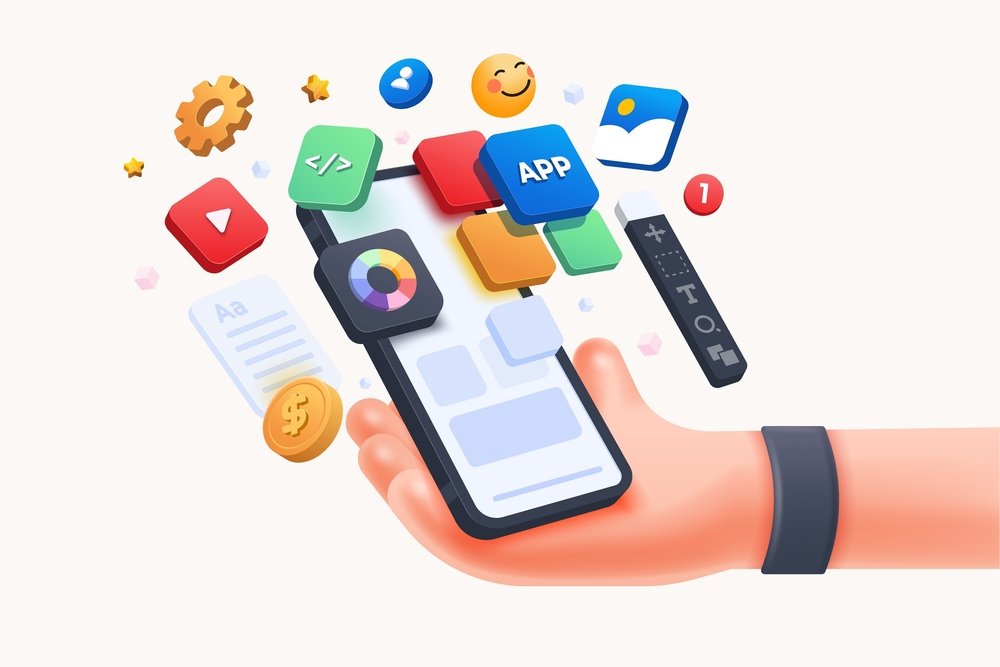Finding the right app development company is like hiring a construction team for your dream home. Sure, you could just find the first builder on Google and hope for the best. But odds are, you’d rather work with someone who gets your vision—and doesn’t cut corners when things get complicated.
Because here’s the truth: Building an app isn’t just about launching it. It’s about making something that people actually want to use again tomorrow.
Let’s talk about how to make that happen.
The Best Ideas Don’t Always Start with a Feature List
You’d be surprised how many founders and businesses begin with a stack of features scribbled on a napkin.
“We need live chat.”
“Users should be able to rate each other.”
“Add voice commands.”
It’s natural to get excited. But good apps don’t win because of how many features they have. They win because they solve one clear problem, cleanly and consistently.
This is where working with custom app developers makes a difference.
They’ll listen. Push back gently when something doesn’t make sense. And sometimes suggest removing more than adding. Because it’s not about doing everything—it’s about doing the right thing, really well.
You Only Need One Mobile App Development Company That Knows What It’s Doing
Forget trying to juggle multiple freelancers across time zones and languages. That rarely works. What you want is one mobile app development company that asks real questions, keeps the project grounded, and doesn’t ghost you after sending an invoice.
Here’s what a solid team usually brings to the table:
- A process that makes space for your input
- Honest conversations about trade-offs (because you can’t build everything at once)
- A realistic timeline—and updates when things shift
- A willingness to scrap what doesn’t work and try again
Think of them less like contractors, more like collaborators who just happen to write code really well.
Ignore Maintenance, And You’ll Regret It Later
Imagine launching your app to a hundred happy users. Great! Now imagine waking up two weeks later to one-star reviews because your login screen freezes after an iOS update.
This stuff happens.
Without mobile app maintenance services, you’re on your own every time a platform changes, a bug sneaks in, or your users want a small tweak. And believe me, they will want changes.
Ongoing maintenance isn’t a nice-to-have. It’s what keeps your app alive—and relevant.
Some things regular maintenance catches:
- Compatibility issues with newer phones or OS updates
- Security patches that keep user data safe
- Analytics adjustments based on user behavior
- Fixes for edge cases you didn’t see during testing
Think of it like brushing your teeth. You could skip it for a while, but eventually you’ll pay for it.
Let’s Talk About Cost (Without the Sugarcoating)
People often ask, “How much will this cost me?” But the better question is: “What’s this worth to my business?”
There’s no single number, because it depends on:
- The number of features
- How complex the backend is
- Whether it’s iOS, Android, or both
- If there are third-party integrations (payments, maps, logins)
- What kind of design work you want
But one thing’s consistent: cheap now often means expensive later. It usually means more bugs, slower development, and redoing work down the road.
If your budget’s tight, focus on building a small but strong MVP (Minimum Viable Product). Start with what people need—not what sounds cool.
What You Should Be Asking Instead
Skip the surface-level questions like “Do you use React Native?” or “Can you make it look like Uber?”
Ask stuff like:
- “How do you decide which features go in the first version?”
- “What’s your plan if we get user feedback that changes the direction?”
- “Do we own the source code?”
- “What happens if something breaks a month after launch?”
The answers to those questions will tell you whether you’re working with a team that’s just trying to finish a contract—or one that actually cares about what you’re building.
Common Mistakes That Still Happen (And How to Dodge Them)
Even smart teams fall into these traps:
1. Skipping user testing.
If you haven’t watched someone use your app without guiding them, you’re guessing. That’s dangerous.
2. Building too much, too soon.
Start small. Learn fast. Build from there.
3. Chasing trends.
Unless your users are asking for blockchain, don’t build in blockchain. Same goes for voice commands, AI bots, and whatever’s trending on Twitter.
4. Forgetting about the boring stuff.
Login screens. Forgot password flows. Data backups. These aren’t exciting, but they matter. A lot.
People Don’t Care How It Works—Only That It Works
Nobody opens an app thinking, “I hope this was built with clean architecture and follows proper CI/CD pipelines.”
They just want it to load. Work. Make sense.
They want to:
- Book that appointment
- Order that meal
- Track that delivery
- Message that person
- Get in, get out, move on
Your job is to make that as smooth and frictionless as possible.
A Few Last Things Before You Start
Here’s a quick checklist before you hire or build:
- Know your “one thing.” What’s the one action users should be able to do easily?
- Prioritize mobile-first. If your app doesn’t feel right on a phone, people won’t stick around.
- Plan for feedback. People will have opinions. Some will be brutal. It’s okay.
- Keep version 1 simple. You’re not trying to win awards. You’re trying to prove it works.
Final Thoughts: Keep Your Head, Stay Curious, Build Smart
There’s no single formula for building a successful app. But you’ll stack the odds in your favor by staying focused on people—their time, their attention, their needs.
Skip the fluff. Avoid the hype. And work with a team that wants to build something that actually matters.
Because your app isn’t just a product. It’s how people will experience your idea.

